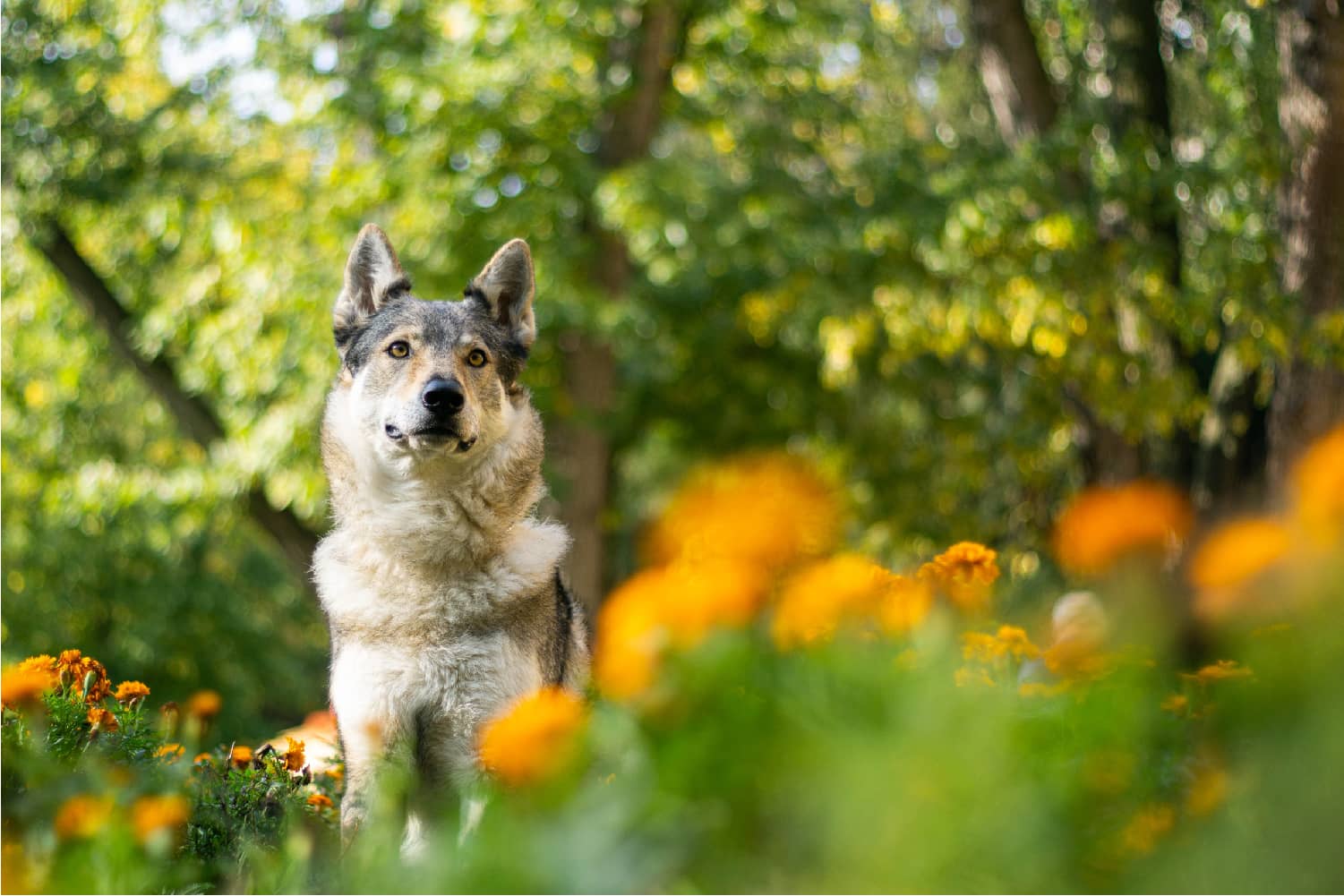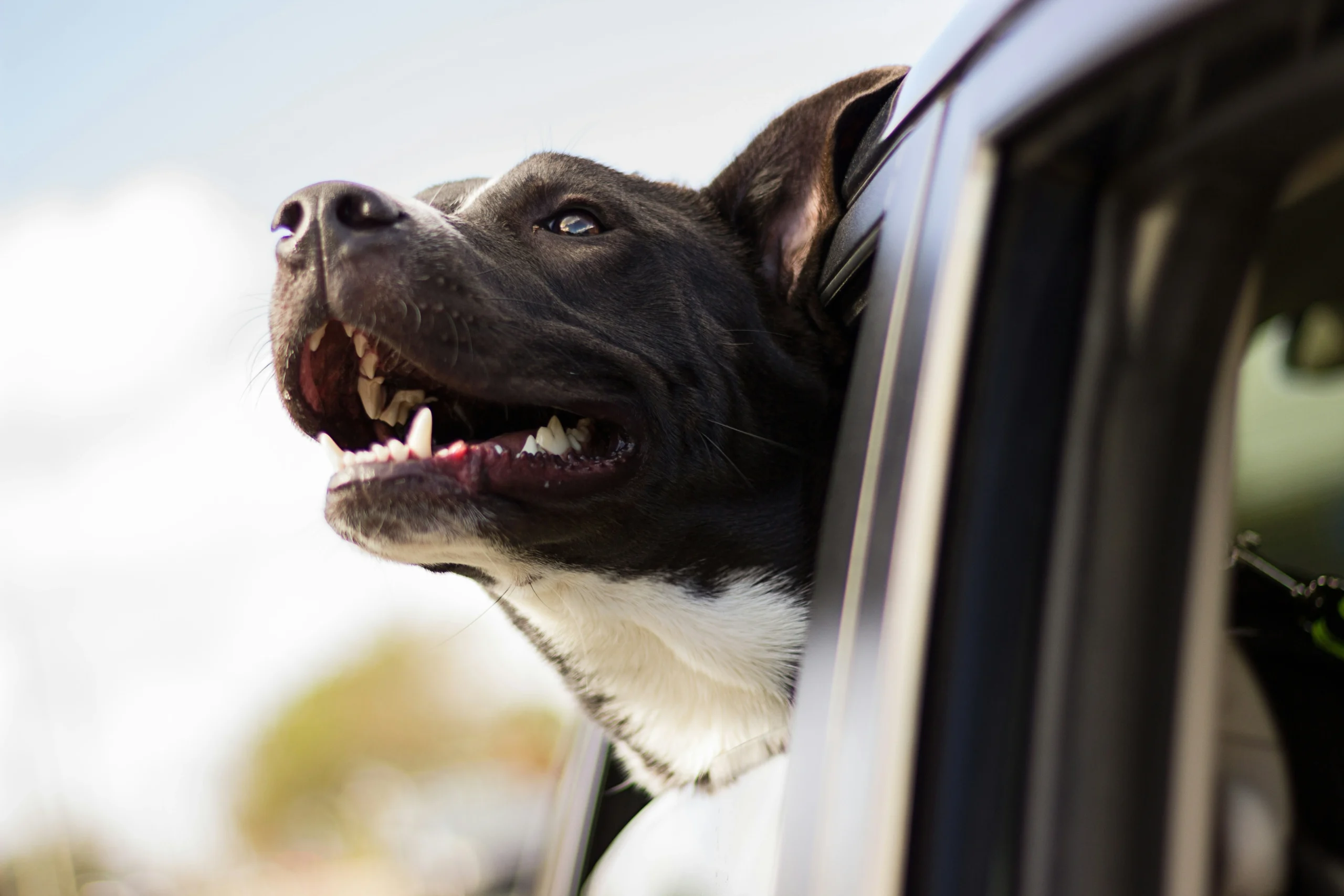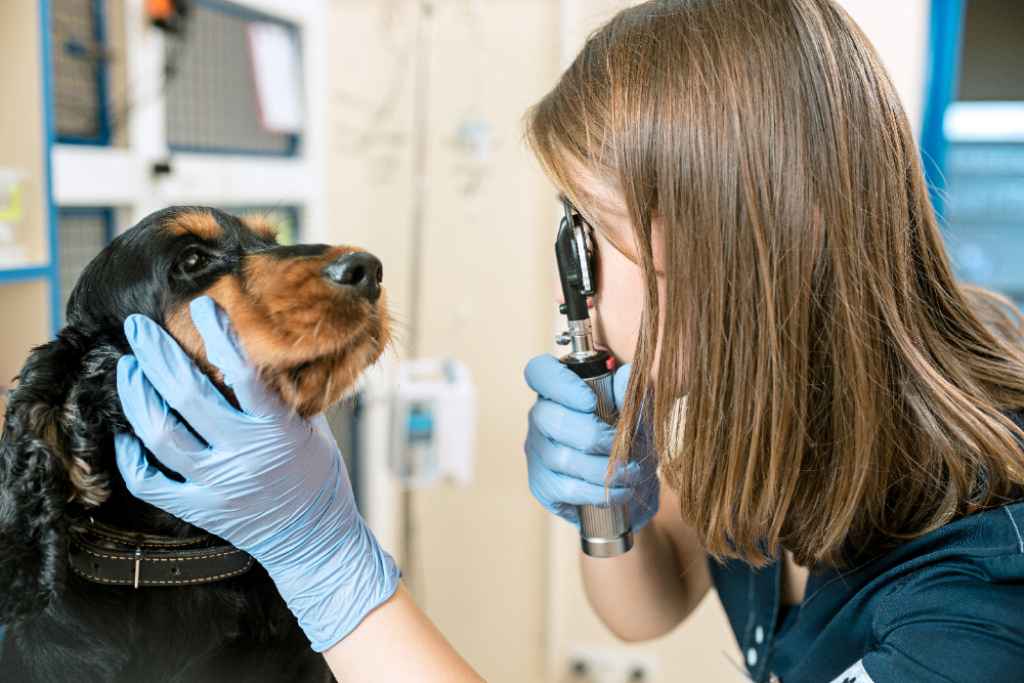Useful advice during high pollen season
The warmer weather in the spring and summer often brings about higher pollen counts and hay fever for many humans, causing inconvenience and discomfort. Around one in five people in the UK are affected by hay fever, but can dogs get hay fever too? The answer to that question is yes.
The pollen and allergens that affect humans in the spring can also be an irritant for dogs, and it is estimated that as many as 10% of dogs are affected by hay fever at some point in their lives.
Hay fever in dogs can present itself through different symptoms than it does in humans, so you may not immediately recognise hay fever in your dog. In this blog, we will explore what causes hay fever in dogs, what symptoms you should look out for and what you can do to help your dog who is suffering from hay fever.
Dermatology advice from your local vets
We’ve put together this resource to help you spot the signs of hay fever in dogs. If you notice your pet is suffering from allergies of any kind, book an appointment at Knutsford Vets Surgery to discuss their symptoms.
Contents
Click on the section that is most relevant to navigate to that part on the page.
- What causes hay fever in dogs?
- What are the symptoms of hay fever in dogs?
- How can hay fever in dogs be treated and prevented?
- What else could be causing hay fever-like symptoms in a dog?
What causes hay fever in dogs?
Hay fever is a seasonal allergy that normally only happens at certain times of the year when plants and grass are releasing pollen into the air, mainly in spring and summer. When a dog has hay fever, their immune system reacts to pollen that has penetrated the skin, landed on mucus membranes or have been inhaled. The dog may present all kinds of symptoms as their body tries to get rid of the offending allergen.
Some studies have shown that dogs who were not as exposed to the outdoors (including grass, trees and plants) in early life, could be more likely to suffer from canine hay fever, due to a lower tolerance. The condition can affect dogs that live both in the country and in the city, and it is not exclusive to areas that have a lot of green spaces.
If and when your dog suffers from hay fever will depend on what pollen they are sensitive to and where you live. There are different hay fever seasons depending on the type of pollen – for example tree pollen typically occurs from March to mid-May, grass pollen covers from around mid-May until July and weed pollen covers from the end of June until September. Given global warming we are also now seeing an extension of the pollen allergy season well into the autumn months.
You may notice symptoms of hayfever in dogs as the weather hots up. They’re quite different to human symptoms so it’s worth familiarising yourself.
Dr Rachel Caines, Veterinary Surgeon with Advanced Certificate in Dermatology
What are the symptoms of hay fever in dogs?
Whilst dogs with hay fever may display some similar symptoms to humans such as a runny nose, runny or inflamed eyes and sneezing, these symptoms are not that common. A dog affected by hay fever is much more likely to experience symptoms related to the skin.
It is important to note that these symptoms will only present during times with a high pollen count – if your dog is displaying these symptoms during winter it is unlikely that hay fever is the culprit, and they may be suffering from a different condition or allergy, such as an allergy to house dust mites.
Below are some of the symptoms that you should look out for that could be a sign of hay fever.
- Itching, nibbling or rubbing areas of the skin, most commonly around the paws, eyes, ears, muzzle, legs, abdomen, groin and around their bottom
- Skin that looks flaky, red or sore and feels greasy to the touch
- Bald patches in the fur caused by excessive scratching
- Thickened, greasy skin can be a complication of hay fever in dogs due to excessive licking and scratching. Similarly, infections of the eyes, skin and ears can occur due to scratching and inflammation.
Many other conditions and allergies could be causing your dog to be itchy, so it is important that you bring your dog to the surgery for an examination if they start displaying these symptoms. By doing so, you can be sure that you are providing the right treatment, as opposed to assuming your dog has hay fever and wasting time and money on ineffective treatments.
Dr Rachel Caines is a veterinary surgeon here at Knutsford Vets and she has completed advanced training in pet dermatology. Her knowledge, alongside our extensive array of diagnostic equipment, is incredibly useful in identifying the cause of a range of skin complaints.
How can hay fever in cats be treated and prevented?
If your dog displays any of the symptoms above, you should book an appointment at the surgery so that our vets can provide a diagnosis and subsequent treatment plan. As mentioned above, some of the symptoms can also indicate other health problems so your vet will rule these out before deciding on an appropriate treatment. Although hay fever cannot be cured, there are a number of treatments that can be used to relieve symptoms, including:
- Medicated shampoos, creams and skin sprays
- Cleansing wipes
- Medicated eye drops and ear drops
- Medications that reduce the immune systems reaction. Most of which are effective anti-inflammatories that tone down the immune system’s reactivity
- Immunotherapy vaccinations, which involves small doses of the allergen given via injection to desensitise the immune system.
It is important that you don’t try any home remedies before checking with your vet, as you could make the problem worse. Medication also requires a prescription so it is vital that you bring your dog to the surgery so that we can ensure they receive the treatment they require.
Prevention and management
Of course, in an ideal world prevention is better than cure, though unfortunately it is impossible to completely remove pollen from a dog’s environment. Keeping your dog inside when there is a high pollen count will help to avoid the onset of symptoms, though this is not always possible and it is important that your dog continues to get the required amount of daily exercise on their walks. However, some things you can do at home to help prevent hay fever symptoms include:
- Regular bathing – giving your dog a bath regularly will be useful in removing pollen from their coat, thus relieving itching. Speak to your vet for recommendations on what shampoo you should use
- Supplement their diet. Giving them essential fatty acid supplements will help improve the condition of the skin
- Avoid walking during high pollen count times. It is best to walk your dog in the early morning and late evening, when the pollen count is generally lower than it is during the day
- Applying petroleum jelly (Vaseline) to the non haired areas of skin such as the tummy and also in between the paws before a walk and using a cool damp towel to remove this after a walk can reduce exposure
- Keep their environment clean. You can help reduce the amount of pollen in the dog’s indoor environment by vacuuming and dusting on a regular basis, including regularly cleaning their beds and toys
- Make extra effort to keep their coat clean. Brushing your dog will help to remove pollen from their coat, so try to do this at least once a day. You could also wipe their fur, skin and paws with a damp cloth after a walk to remove excess pollen
- Keep on top of worming and flea treatment. Falling behind on these preventative treatments will contribute to itchiness and poor skin condition.
What else could cause your dog hay fever like symptoms?
There are many other conditions that can cause itchiness in dogs, so it’s important to get a proper diagnosis from one of our vets at Knutsford Vets before jumping to conclusions. It is more likely that your dog is suffering from a dust or parasite allergy, so your vet will want to rule these out first by treating parasites and running an allergy test. Other conditions that can cause excessive itching include yeast overgrowth on the skin, bacterial infections and mange.
If your dog is suffering from runny eyes, you should bring them for an appointment at Knutsford Vets as they are likely to be experiencing discomfort. There are many other causes of runny eyes in dogs, some of which can become serious if left untreated, so it’s vital that you get a proper diagnosis. Some of the other possible causes include ulcers in the eye, foreign bodies trapped on the eye, scratches and Keratoconjunctivitis Sicca (KCS) (or ‘dry eye’). We have a resource available to inform you about eye discomfort in pets here.





